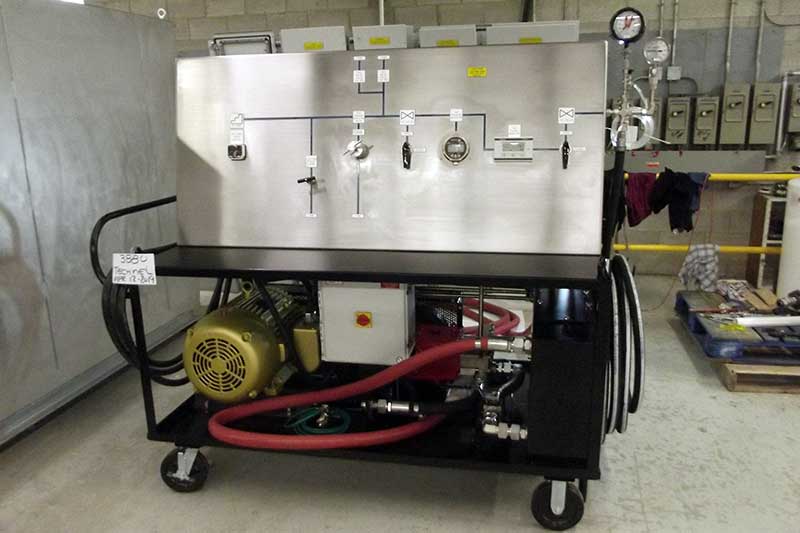
What are pneumatic control panels?
Pneumatic control panels are specialized control systems that use compressed air to control and operate various industrial processes, machinery, and equipment. They are commonly used where precise control and automation of mechanical and pneumatic devices is required. These control panels typically consist of components and elements designed to regulate the flow and pressure of compressed air to achieve specific tasks.
What are the key components of pneumatic control panels?
• Compressed air source: Pneumatic control panels require a source of compressed air, typically provided by an air compressor or a compressed air system. This compressed air serves as the energy source for the control panel.
• Valves: Valves play a crucial role in pneumatic control panels. They are used to control the flow of compressed air to different parts of a system. Common types of valves include on/off valves, proportional valves, and directional control valves.
• Pressure regulators: Pressure regulators are used to maintain a specific and adjustable pressure level within the pneumatic system. They ensure that the air pressure remains within the desired range for optimal operation.
• Pressure gauges: Pressure gauges are used to monitor and display the pressure levels within the pneumatic system. They provide operators with real-time information about the system’s status.
• Solenoid valves: Solenoid valves are electromagnetic valves that are commonly used for remote or automated control of air flow. They can be controlled electrically or pneumatically and are essential for automation applications.
• Control logic: Pneumatic control panels may include control logic elements, such as pneumatic timers, sequencers, and logic controllers, to enable the sequential and coordinated operation of pneumatic actuators and devices.
What are the applications of pneumatic control panels?
Pneumatic control panels are widely used in various industrial applications to control the flow of compressed air to regulate the operation of machinery, processes, and systems. Here are some common applications:
Industrial automation: Pneumatic control panels are widely used in manufacturing and industrial automation to control the movement of pneumatic actuators, such as cylinders and valves. They are essential for automating tasks like material handling, conveyor systems, and robotic operations.
Material handling: Pneumatic control panels are employed in material handling equipment to transport bulk materials like powders, grains, and granules within factories and processing plants using pneumatic conveyors.
Packaging machinery: These control panels regulate the operation of packaging machines, controlling the movement of packaging materials, sealing mechanisms, and filling processes.
Automotive manufacturing: Pneumatic control panels are integrated into automotive assembly lines to control robotic welders, paint booths, and other equipment used in vehicle manufacturing.
Oil and gas industry: In the oil and gas sector, pneumatic control systems are used to control the flow of gases and liquids in pipelines, regulate pressure in wellheads, and manage processes in refineries and petrochemical plants.
Mining and construction: Pneumatic control panels play a role in material handling systems used in mining and construction, controlling conveyor belts and other equipment.
Energy and power generation: Pneumatic control systems can be found in power plants and energy generation facilities to control processes and equipment like valves and dampers.
Pneumatic control panels offer advantages such as reliability, simplicity, and ease of maintenance, making them suitable for applications where precise control and automation are essential.
CCP pneumatic control panels
CPP has extensive experience delivering comprehensive, turnkey pneumatic control panel solutions for virtually any industry or process.